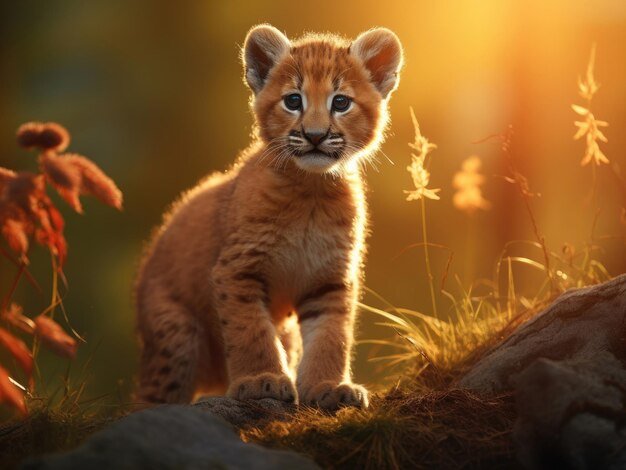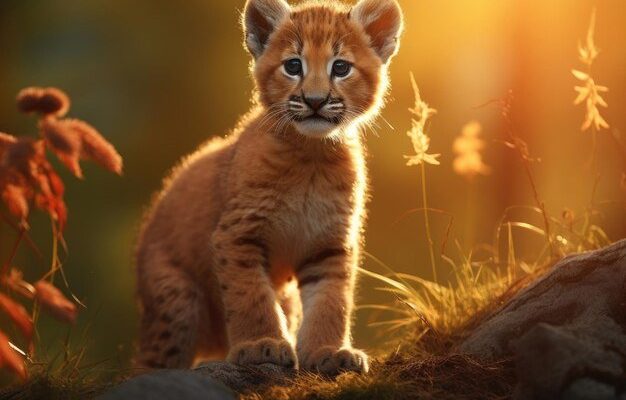
Let’s clear things up over a cup of coffee. Think of the puma as the ultimate chameleon in the wild, adapting to various environments across North and South America. Its elusive nature has contributed to a whirlwind of myths that seem to stick around longer than they should. So, what’s real, and what’s just the stuff of stories? We’re diving into the common misconceptions about pumas to uncover the truth.
Puma vs. Cougar: Are They the Same?
A question that often pops up is whether a puma and a cougar are the same animal. The answer is a bit complicated. In fact, “puma” and “cougar” are two names for the same species, *Puma concolor*. Isn’t that wild? Depending on where you are, you might hear it called a mountain lion or even a catamount—each name reflecting local culture and wildlife.
Here’s the thing: all these names refer to the same large cat, but they can create confusion, especially when we consider their habitat and behavior. In the Andean region, “puma” is the go-to term, while in the United States, “cougar” seems to be the favorite. So, whether you call it a puma or a cougar, you’re really talking about the same majestic creature.
Pumas Are Not Always Solitary
Many people believe that pumas are entirely solitary creatures. While it’s true that they often hunt alone, these cats are more social than they get credit for. In fact, during mating season, pumas seek out mates and can even stay with them for a short period. Mother pumas are also very nurturing to their cubs, staying with them for up to two years while teaching them essential survival skills.
You might be wondering about their territorial behavior—yes, they can be quite protective of their space. However, pumas have been known to tolerate other pumas in their vicinity, especially if resources like food and water are plentiful. This flexibility allows them to adapt to varying environmental conditions.
Pumas Are Not Just Found in the Mountains
While the name “mountain lion” suggests high-altitude habitats, pumas can actually thrive in various ecosystems. From deserts to forests, they’re incredibly adaptable. Imagine a big cat that can trek through forests, scale rocky cliffs, or even navigate urban areas. That’s the puma for you!
They roam diverse landscapes, primarily due to their ability to hunt a wide range of prey. Deer, rodents, and even livestock are all on the menu. Their adaptability means they can find food in different environments, allowing their populations to thrive across the Americas from the snowy Rockies to the humid jungles of Central America.
Pumas Don’t Roar Like Lions
One of the more surprising myths is that pumas can roar. Sorry to burst your bubble, but they can’t! Unlike their big cat cousins like lions and tigers, pumas communicate with a series of other sounds—think hisses, growls, and even purrs. Imagine a cat trying to be intimidating yet maintaining a soft edge; that’s how pumas express themselves!
This vocalization style is likely due to their solitary hunting methods. Rather than roaring to establish dominance in a pride, pumas rely on stealth and subtlety to communicate. Their soft vocalizations help them maintain their elusive nature, making it harder for prey to detect them.
Pumas Aren’t All That Dangerous to Humans
You might picture a puma as a terrifying predator stalking its next victim, but the reality is quite different. Pumas are generally not a threat to humans. Most encounters end with the puma retreating, as they prefer to avoid conflict.
In fact, the risk of a puma attack is extremely low. According to statistics, your chances of being attacked by a puma are less than getting struck by lightning! This doesn’t mean you should go looking for one in the wilderness, but it’s worth knowing that they’re not hunting humans. Instead, they’re primarily interested in deer and smaller animals.
Pumas Are Not Endangered, but They Face Threats
It’s a common belief that pumas are on the brink of extinction, but that’s not entirely accurate. While they’re listed as a species of “least concern,” pumas do face significant threats. Habitat loss, hunting, and conflicts with livestock are major issues impacting their populations.
Here’s the scoop: pumas are very adaptable, which helps them survive in fragmented habitats, but human encroachment is a real concern. Efforts are underway to protect their environments and promote coexistence with humans. As we learn more about these amazing creatures, we can work towards preserving their habitats and keeping both pumas and humans safe.
So, there you have it! The puma is a fascinating creature that’s often misunderstood. From their adaptability and social behaviors to their unique vocalizations and relatively low threat to humans, pumas are remarkable animals.
Next time you hear a myth about pumas, you’ll be armed with the facts to set the record straight. Let’s appreciate these incredible big cats for what they truly are—strong, adaptable, and crucial players in their ecosystems. Whether you’re hiking in the mountains or just curious about wildlife, remember there’s always more than meets the eye. So, the next time you think about pumas, think of the reality—you might just find them as intriguing as I do!

